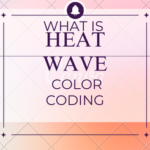Turkey Earthquake: Basics Explained

Last week Turkey was battered by a series of powerful earthquakes with the first one, being a quake of magnitude 7.8. Most of the region sits between two major faults, the North Anatolian Fault and East Anatolian Fault.
Most of Turkey sits on the Anatolian plate between two major faults: the North Anatolian Fault and the East Anatolian Fault. The tectonic plate that carries Arabia, including Syria, is moving northwards and colliding with the southern rim of Eurasia, which is squeezing Turkey out towards the west.
LEARNING WITH TIMES /WITHOUT CLASSES: BASICS
The Three Layers of the Earth– crust, mantle, and core. The crust is the outermost solid part of the earth. The portion of the interior beyond the crust is called the mantle. The crust and the uppermost part of the mantle are called the lithosphere. The core-mantle boundary is positioned at the depth of 2,900 km.
Plate tectonics is the theory that Earth’s outer shell is divided into large slabs of solid rock, called “plates,” that drift over Earth’s mantle, the rocky inner layer above Earth’s core. Below the lithosphere is the asthenosphere — a viscous layer kept malleable by heat deep within the Earth. It lubricates the undersides of Earth’s tectonic plates, allowing the lithosphere to move around.
The seven major plates are the North American, Pacific, Eurasian, African, Indo-Australian, South American, and Antarctic tectonic plates.
An earthquake is the result of a sudden release of energy, an intense shaking of Earth’s surface, in the Earth’s crust that creates seismic waves. The shaking is caused by movements in Earth’s outermost layer(Crust).
The Earth is made of four basic layers: a solid crust, a hot, nearly solid mantle, a liquid outer core and a solid inner core. The solid crust and top, stiff layer of the mantle make up a region called the lithosphere. The lithosphere isn’t a continuous piece that covers around the whole Earth like an eggshell. It’s actually made up of giant tectonic plates.
Tectonic plates are constantly shifting as they drift around on the viscous, or slowly flowing, mantle layer below. This non-stop movement causes stress on Earth’s crust. When the stresses get too large, it leads to cracks called faults. When tectonic plates move, it also causes movements at the faults. An earthquake is the sudden movement of Earth’s crust at a fault line.
The location where an earthquake begins is called the epicenter. An earthquake’s most intense shaking is often felt near the epicenter.
The energy from an earthquake travels through Earth in vibrations called seismic waves. Scientists can measure these seismic waves on instruments called seismographs.
The magnitude of an earthquake, total amount of energy released by earthquake, is conventionally reported using the Richter scale or a related Moment scale (with magnitude 3 or lower earthquakes being hard to notice and magnitude 7 causing serious damage over large areas)
Another way to measure the strength of an earthquake is to use the Mercalli scale. Invented by Giuseppe Mercalli in 1902, this scale uses the observations of the people who experienced the earthquake to estimate its intensity based on amount of damage to various types of structures.
Three main types of waves are produced during the earthquake: Primary waves or P, Secondary waves or S and Long waves or surface waves or L.
L waves are responsible for most of the the destruction caused by an earthquake. P and S waves in the study of earth’s interior.
The P waves travel fastest and first to reach seismic station, and after that the S waves which are the slowest arrive. P waves is a longitudinal wave: in which the particle displacement is parallel to the direction of wave propagation. P wave is also called compression -dilation. Like the sound waves, the P waves pass through solids, liquids, and gases alike.
The S waves are Transverse waves: the particle displacement is perpendicular to the direction of wave propagation. The S waves pass through only solids.




0 Comments